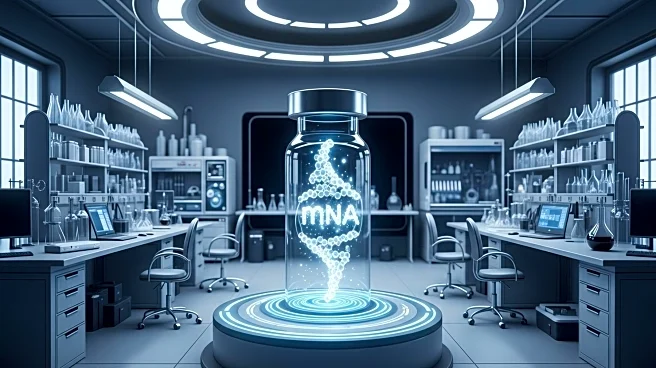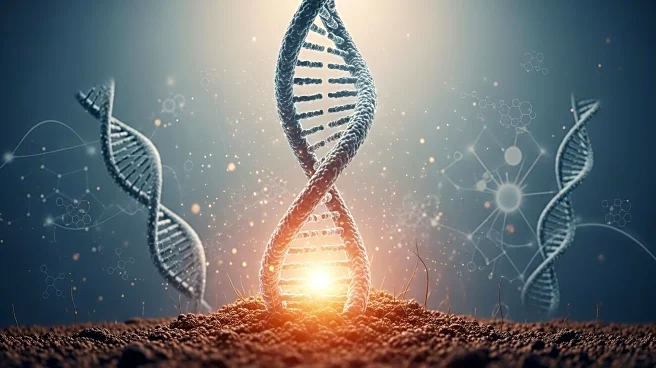What's Happening?
An international team of scientists has discovered a new understanding of how amino acids stabilize proteins in medical formulations. Traditionally, amino acids were thought to protect proteins through biological interactions that prevent misfolding. However, the study reveals that amino acids stabilize proteins through fundamental physical chemistry principles governing colloidal interactions. This discovery highlights the intrinsic colloidal effects of small molecules in solution, which modulate interactions between larger particles like proteins. The research, led by the Supramolecular Nano-Materials and Interfaces Laboratory at EPFL, introduces the concept of 'screening attraction,' where small molecules reduce attractive forces between larger particles, preventing protein aggregation.
Why It's Important?
This breakthrough has significant implications for biochemistry and pharmaceutical industries. Understanding the molecular mechanisms of protein stabilization can enhance drug formulation, ensuring stability and efficacy. The discovery urges a reevaluation of experimental protocols, emphasizing the importance of reporting amino acid concentrations in research. This could improve reproducibility and interpretation of biochemical phenomena, particularly in protein therapeutics development. The findings also open avenues for predictive design in protein stabilization, potentially reducing dependency on trial-and-error methods and accelerating the development of stable biopharmaceutical products.
What's Next?
The study's insights may lead to new strategies in drug formulation and protein therapeutics. Researchers aim to develop computational and experimental tools to predict which small molecules can optimally stabilize specific proteins. This could revolutionize the formulation process, enhancing drug efficacy and reducing production costs. The scientific community anticipates further exploration into the roles of small molecules in colloidal systems, impacting life sciences and materials chemistry.
Beyond the Headlines
The discovery reframes our understanding of protein stabilization at the molecular level, balancing forces of attraction and repulsion through small molecules. This could inform how cellular environments are engineered to maintain protein homeostasis, offering insights into stress responses at the cellular level. The study bridges fundamental colloidal theory with practical applications, illustrating the power of international collaboration in unraveling complex biochemical puzzles.










